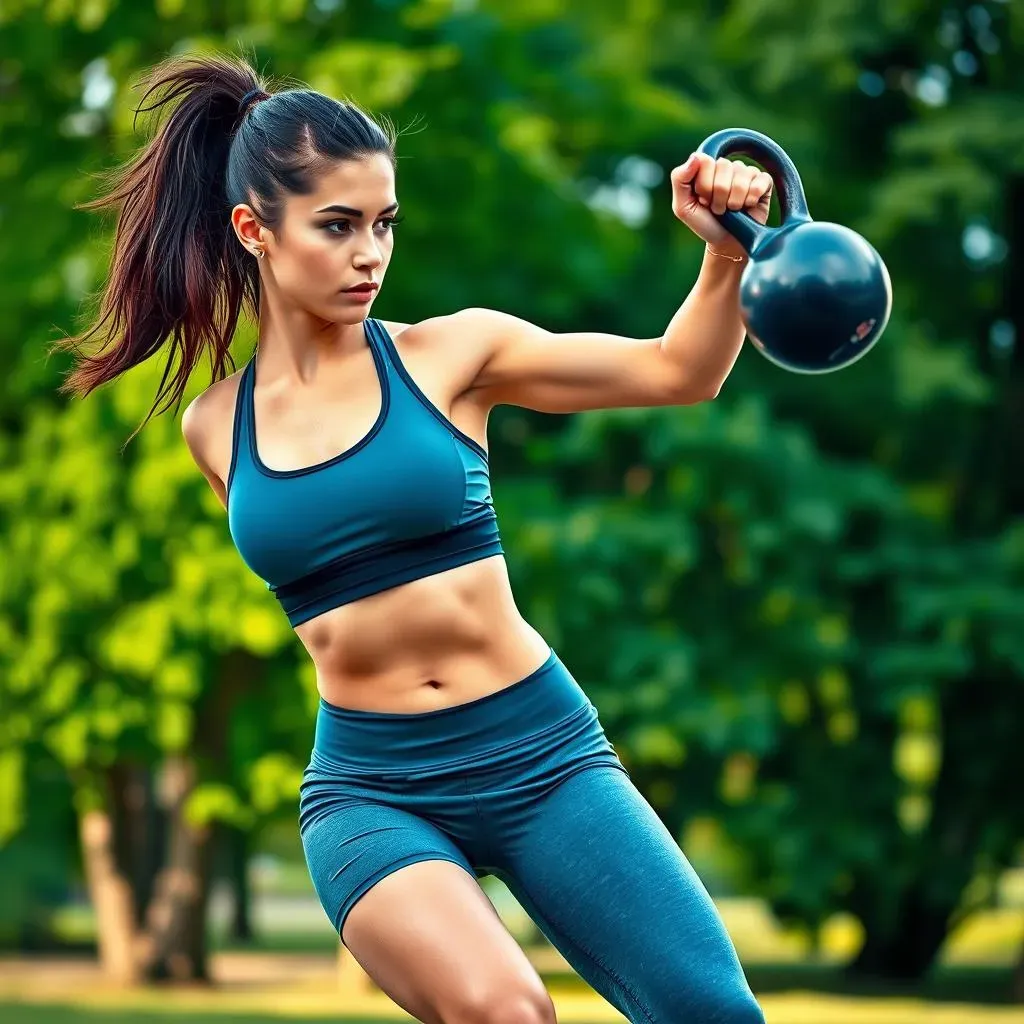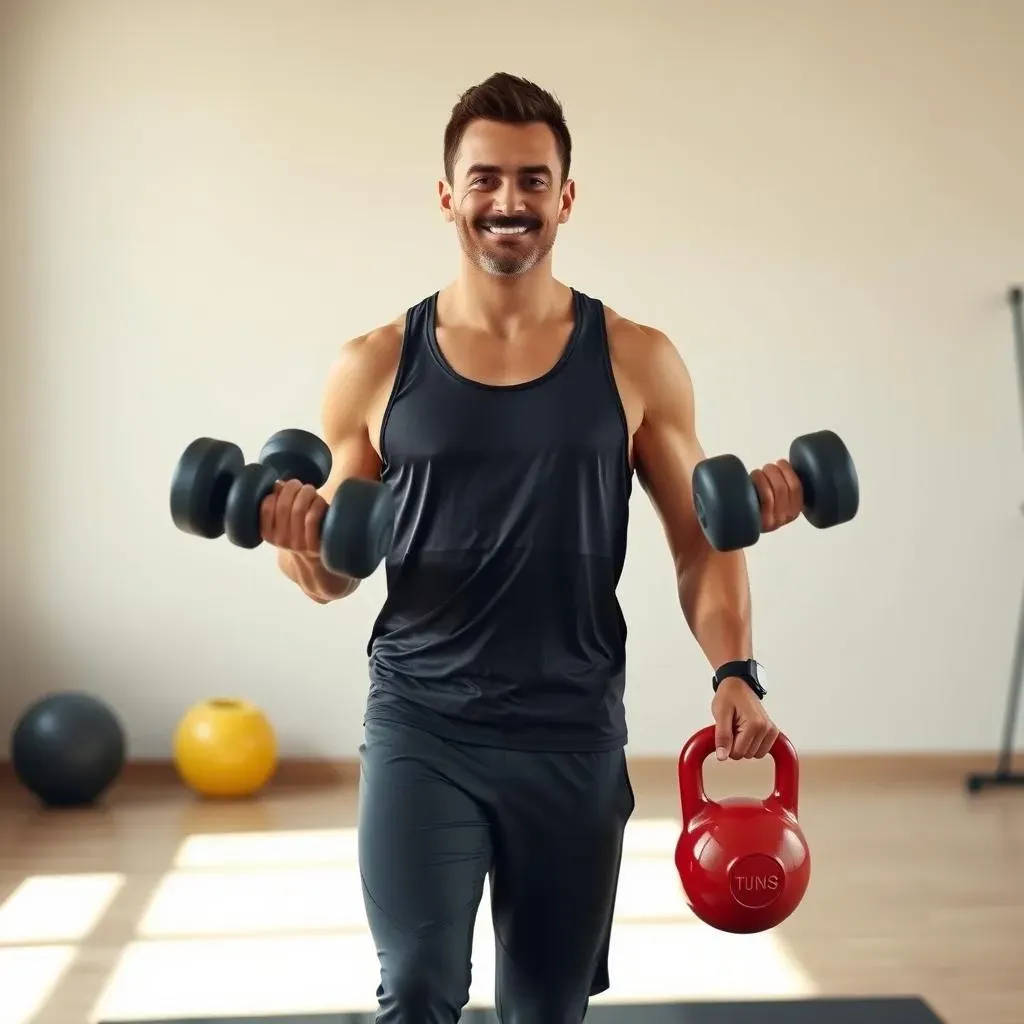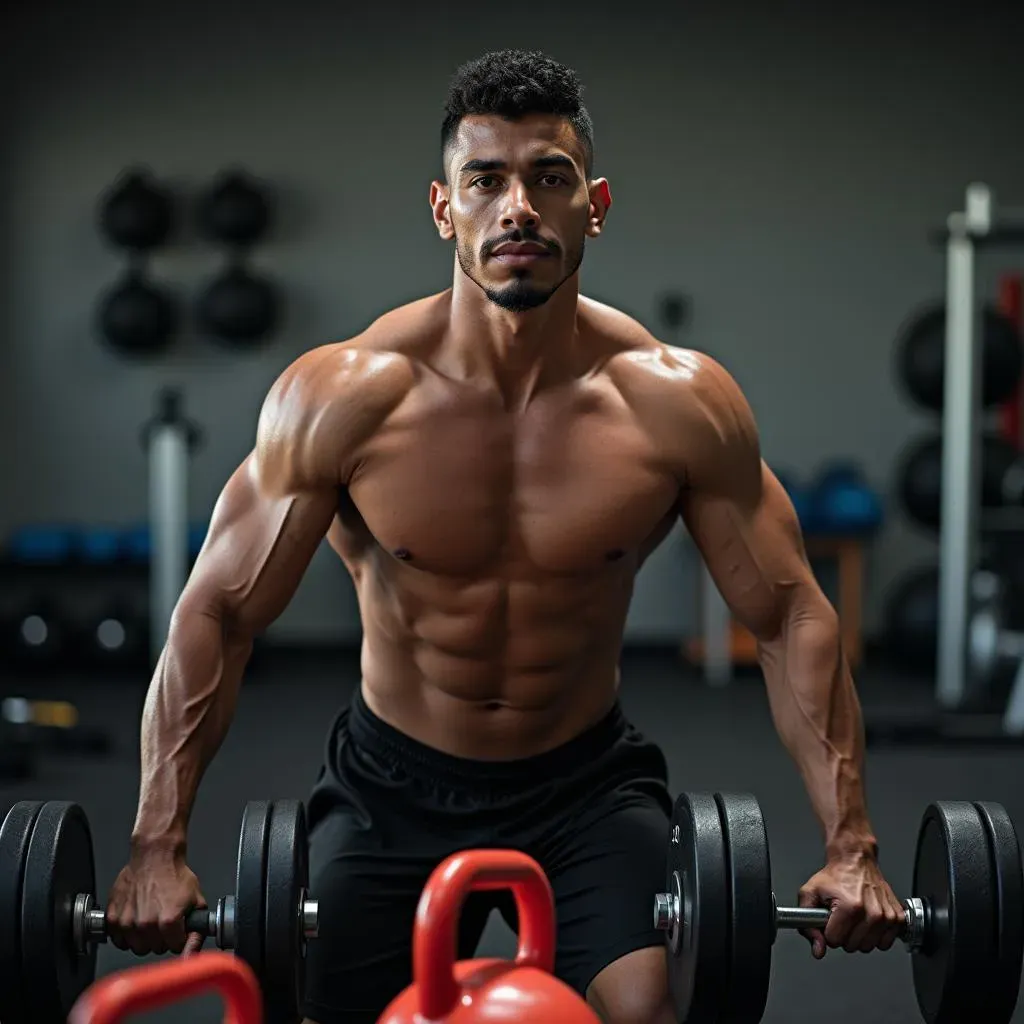Table of Contents
Ready to ditch the gym and sculpt a powerful physique? You don't need fancy machines to get a full-body workout. This article is your guide to mastering the art of the dumbbell and kettlebell full body workout. We're going to explore why these tools are awesome for building muscle and strength, and why they are so effective. We will also cover the crucial stuff like getting your form right, which is key for avoiding injuries and seeing results, and I’ll show you a killer workout routine that will hit every muscle group. Think of this as your personal roadmap to a stronger, more capable you. This isn't just about lifting weights; it's about learning to move your body with purpose and power. So, let's get started and unlock your full potential!
Why Choose Dumbbell and Kettlebell Full Body Workouts?

Why Choose Dumbbell and Kettlebell Full Body Workouts?
Okay, so you're wondering why you should grab a dumbbell or kettlebell instead of hitting the fancy machines, right? Well, let me tell you, it's a game-changer. First off, these tools are incredibly versatile. You're not stuck doing one specific movement; you can hit every muscle in your body with a few simple exercises. Think of them like the Swiss Army knives of fitness—compact, adaptable, and surprisingly powerful. Plus, you can do these workouts anywhere. Your living room, a park, the garage, you name it! No more waiting for machines at the gym or paying for expensive memberships. It’s about freedom and efficiency, all wrapped up in one. And let's be honest, there's something super satisfying about swinging a kettlebell or pressing a dumbbell. It feels primal, like you're actually working *with* your body, not against it.
I used to think that you needed a bunch of complicated gear to get strong, I was wrong. I was spending hours at the gym, feeling like a hamster on a wheel. Then I started playing around with dumbbells and kettlebells, and boom! It was like unlocking a cheat code. My strength went up, my body felt more connected, and I was actually enjoying my workouts, which is huge for me. It's not just about building big muscles. It's also about improving your coordination, balance, and overall athleticism. You're not just lifting weight; you're learning to control your body through a full range of motion. It's a more natural and functional way to train, which translates to real-world strength and movement.
Benefit | Description |
|---|---|
Versatility | Hit every muscle group with a variety of exercises. |
Convenience | Workout anywhere, anytime. |
Functional Strength | Improve coordination, balance, and real-world movement. |
Mastering Proper Form for Effective Dumbbell and Kettlebell Exercises

Mastering Proper Form for Effective Dumbbell and Kettlebell Exercises
The Foundation: Why Form Matters
Alright, let's talk about form. It's not the most exciting topic, I get it, but it's absolutely crucial. Think of your body like a finely tuned machine. If one part is out of alignment, the whole thing can break down. Good form isn't just about lifting heavier; it's about lifting *smarter.* It protects you from injuries, allowing you to train consistently and make progress. It also makes sure that you're actually working the muscles you're trying to target, and not just flailing around with the weight. It’s like building a house; you wouldn't skip the foundation, would you? Proper form is your fitness foundation.
I’ve seen so many people rush into exercises, swinging weights around like they’re trying to start a bonfire, and ending up with strains and sprains. It's not about how much you lift, but how well you lift. And trust me, it's way more impressive to see someone move with control and precision than someone who's just throwing weight around. When I started, I was too focused on the numbers, and paid the price. I had to take a break to recover from a shoulder injury, and it was a real bummer. That’s when I understood the importance of form.
Key Principles of Good Form
So, what does good form actually look like? It's all about control, core engagement, and proper alignment. Always start with a stable base. Whether you’re standing, kneeling, or lying down, make sure you feel grounded. Engage your core throughout the movement; think of it as your body's natural weight belt. Keep your spine neutral, not arched or rounded. This is especially important when doing exercises like deadlifts or rows. And finally, move with intention. Avoid jerky or rushed movements. Focus on the muscles you're working and feel them contract and extend through the exercise.
Principle | Description |
|---|---|
Stable Base | Ensure you are grounded for each movement. |
Core Engagement | Keep your core muscles tight and active. |
Neutral Spine | Maintain a natural curve in your spine. |
Controlled Movements | Avoid jerky or rushed motions. |
Practical Tips for Perfecting Your Form
Now, let's get practical. First, start with lighter weights. Don't try to lift the heaviest dumbbell right away. Focus on mastering the movement before adding more weight. Use a mirror or record yourself to check your form. It's amazing what you can notice when you see yourself from a different perspective. Don’t be afraid to slow down your movements. This helps you feel the muscles working and maintain control. If you are unsure about a movement, ask a qualified trainer or coach for guidance. There are plenty of online resources that can also help.
I often use the analogy of learning to play a musical instrument. You wouldn't start with a complicated piece; you’d master the basics first. It’s the same with exercise. Build a solid foundation, and the results will come. And remember, it's okay to not be perfect. Form is a journey, not a destination. It takes time and practice to get it right, so be patient with yourself and celebrate the small victories.
The Ultimate Dumbbell and Kettlebell Full Body Workout Routine

The Ultimate Dumbbell and Kettlebell Full Body Workout Routine
Alright, let's get to the good stuff: the actual workout! This routine is designed to hit all the major muscle groups, and you can do it pretty much anywhere, which is a big win in my book. We're going to combine dumbbell and kettlebell exercises to get the best of both worlds. The dumbbell moves will give us great control and stability, while the kettlebell swings will get our heart pumping and build some serious power. I've structured it so that you’ll start with a warm-up, then hit the main workout, and finish with a cool-down. The goal here is to move with intention, focus on your form, and listen to your body. Don't be afraid to modify if needed; it’s about progress, not perfection.
I remember when I first started putting together workout routines, I was so overwhelmed by all the options. But, the beauty of a dumbbell and kettlebell full body routine is its simplicity. You don't need a ton of exercises; you just need to choose the right ones and do them well. This routine is perfect for building overall strength, burning calories, and improving your movement. Remember, consistency is key. Aim to do this workout 2-3 times a week, and you'll start seeing and feeling the results in no time.
Workout Phase | Description |
|---|---|
Warm-up | Prepare your body with light cardio and dynamic stretches. |
Main Workout | Perform a combination of dumbbell and kettlebell exercises. |
Cool-down | Relax your muscles with static stretches. |
Before we start, here are some of the exercises we will be doing:
- Dumbbell Squats
- Dumbbell Chest Press
- Dumbbell Rows
- Kettlebell Swings
- Kettlebell Goblet Squats
- Kettlebell Lunges
Progressing Your Dumbbell and Kettlebell Full Body Strength Journey

Progressing Your Dumbbell and Kettlebell Full Body Strength Journey
So, you've nailed the basics, and you're feeling stronger. What's next? It's time to talk about progression. This isn't about just adding more weight every time you workout; it's about smart, consistent progress. Think of it like leveling up in a video game. You need to earn your way to the next stage. This means gradually increasing the intensity of your workouts, whether that's by adding weight, increasing reps, or making the exercises more challenging. It's also about listening to your body and making sure that you’re not pushing yourself too hard too soon. Patience and consistency are your best friends here.
I've been there, eager to jump ahead, only to get sidelined by an injury. It's a frustrating experience, but it taught me that steady progress is the way to go. This journey is a marathon, not a sprint. Celebrate the small wins, and don't get discouraged by the occasional setback. The important thing is that you're moving forward, learning, and growing stronger with each workout. Remember, it is not about how fast you get there, but that you are making progress.
Progression Method | Description |
|---|---|
Increase Weight | Gradually add weight as you get stronger. |
Increase Reps | Increase the number of repetitions you perform. |
Increase Sets | Add additional sets to your workout. |
Increase Difficulty | Try advanced variations of exercises. |
One of the best ways to progress is to focus on mastering the movement patterns, not just lifting more weight. This means paying attention to your form and making sure you're moving with control and precision. Once you've nailed the basics, you can start to experiment with more advanced variations of the exercises. For example, if you're comfortable with regular squats, try adding a jump at the end or doing them on one leg. If you're comfortable with dumbbell chest press, try doing them on a stability ball or with a decline angle. These variations will challenge your body in new ways and help you continue to progress. Don't be afraid to step outside your comfort zone and experiment with different exercises and routines.
I like to think of my fitness journey as a constant exploration. I'm always learning, always pushing myself, and always looking for new ways to improve. It's not just about the physical changes, it's also about the mental growth. You build resilience, discipline, and a deep connection with your body. So, embrace the challenge, celebrate your victories, and keep pushing forward. The journey is the destination!
Here are some additional tips to keep you progressing:
- Keep a workout log to track your progress.
- Make sure to get enough sleep and proper nutrition.
- Don't be afraid to change your routine every few weeks to avoid plateaus.
- Listen to your body and take rest days when needed.
- Find a workout partner for motivation and accountability.